The Boy Without A Name—And The Therapist Who Helped Him Understand That Objects Have Names4/14/2019  Philosopher Krishnamurti once commented that if you tell a boy the name of a bird he will never see the bird again, because he will believe he understands what a bird is by knowing its name. In other words, once it is named a "Robin" for example, it ceases to be a mysterious and wonderful flying creature in the mind of the boy. Thereafter he never sees the magnificent mystery that the bird truly is. He only sees a Robin. Krishnamurti’s profound statement suggests that we tend to reduce the wonder of the world by naming and objectifying everything. Long before human language evolved, birds, in this example, existed just fine without names. But giving them names and describing their features satisfies the human mind, which likes to categorize everything into neat rows of boxes called 'concepts'. But nothing could be said about any bird that could possibly encapsulate its true mystery. In the same way that your name and personal characteristics only describe the surface you. The deeper you is beyond categorization. Here’s The Flip Side I listened to a therapist being interviewed on KUOW, in Seattle. She was talking about helping a boy, Tony, understand that objects have names. Tony was 27, deaf and somewhat mentally challenged. The problem was that Tony was incapable of comprehending that things have names. Including himself. If the therapist pointed at him and signed "Your name is Tony." Tony would point at her and sign "Your name is Tony." And if she pointed at herself and signed “My name is Jill” Tony would point to himself and sign “My name is Jill.” No matter what she pointed at and named, Tony could only mimic back what she said. 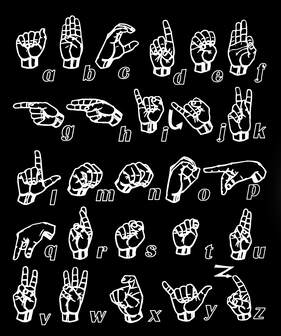 Then she got the idea of communicating to an invisible person sitting in an empty chair so that Tony could observe her signing the names of things to the fictitious invisible person. Addressing the empty chair, she would point at an object in the room and sign what it was. Then she would go sit in the empty chair and sign back, to the now empty chair she had been sitting in before, that she understood the name of that object. Tony watched her do this over many sessions. Then one day Tony signed the question: “Does everything have a name?” And she signed “Yes”. And Tony go it. He looked around at all the things in the room and was stunned. His eyes widened, he slumped in his chair and began weeping. Because, according to the therapist, in that moment the world had instantly expanded for him. Everything in it suddenly had concrete meaning. From that point on Tony and the therapist conversed ravenously about all the things in his world. So as infants, before we developed language, things had no name. We looked at the world in wordless wonder. Then at some point we needed to develop language in order to get on in life, and we learned how to name things. But now, at this point in the evolution of human consciousness, even though we are capable of defining and naming everything, as we sometimes must, we are also capable of choosing not to. That is, to willingly leave experiences, people and things unnamed, unidentified and uncategorized. With a little intention and practice, we begin to experience the world differently. We begin to experience again the wordless wonder that we knew as a child and as the world truly is. See related posts: What Is A Tree? You Are Not Your Name You Are The universe
1 Comment
When I critique my student's artwork I try to be straightforward and not mince my words. I also compliment them frequently in a positive way because I wish to affirm their suspicion that their creative efforts are worthwhile. By complimenting them I am not flattering or pandering, I am validating and supporting their discovery and excitement about making art. So compliments are very useful in that way.
However, even some accomplished artists, who no longer need validation, like to be complimented too, just for having talent, which is a different thing. Compliments make him feel good, even important. It feeds the ego. The true artist—the artist who is interested in deeper things, will appreciate and enjoy another artist's artwork, but is never impressed because another artist is talented. Neither is he impressed with his own talent, nor depressed by the lack of it. Because he is not interested in personal comparisons. He is only interested in the dynamic creative flow that he is involved in. And he enjoys seeing how that same amazing movement expresses through other artists. His attention is so fully absorbed in that, there is no room for petty comparisons or boasting. Now, the worst thing a person could say about your artwork is not that it is bad, ugly or amateurish. Surprisingly, comments like that are often very useful, especially if they are thoughtful and informed. And if the work inspires an engaging conversation then that would be an indirect compliment . However, one of the worst thing a person could say to an artists while looking at their art is “Gee, you are so talented! What does it feel like to be so talented? I have no talent whatsoever. I could never do what you do . . . “ In other words, whatever beauty or interest the viewer initially saw in the artwork is instantly obliterated by their ego talking about itself in comparison to another person, the artist. They have completely missed the gift the artist has offered them. On the other hand, one of the best compliments comes without words. It is to observe a viewer's quiet absorption and curiosity as they look at your artwork. In that moment you are watching them experience what you experience as the artist. You want them to experience that same timeless curiosity about the world, without any thought of themselves or another. The whole point of art is to connect us to something deeper than the normal state of human consciousness. Art is like a stone that takes our awareness deeper, or a wing that takes us higher. But if all it does is reflect back to us more of the normal state of human consciousness then a great opportunity has been lost.
All human originality is derivative of the originality we see in nature.
This is a possible title for a poem, or painting, or song:
"The One Without the Percent". A percentage is a fragmentation. The 'one percent' represents an exclusive fraction of society. But the one—the deeper one, is without fragmentation and is indivisible and all-inclusive. The Post Personalism Group will award anyone one million dollars if they can offer scientific evidence that they are not already one with the universe. Contact for details.
This essay was written in conjunction with the Consciousness Project painting series in which consciousness is expressed as light and space.
(I was asked how this essay on consciousness relates to Post Personalism art. It relates because Post Personalism includes the study of the evolution of human consciousness, which is one of the central themes explored in Post Personalism. Does Consciousness Originate In The Human Brain? The scientific view of consciousness is unable to accept the possibility that consciousness might originate not from inside the human brain but from outside the human brain. Because to acknowledge that possibility would be in their minds a slippery slope toward believing in a distant magical divine power. And that option does not sit well with scientists. But there is an entirely different way of looking at it. As scientists haven’t the foggiest idea what causes consciousness and yet they do not hesitate to offer their opinions about it anyway—I therefore feel at liberty to offer my own opinions too. I am not a scientist, and my opinions are born out of my own observations and my own philosophical inquiry. So let me start by saying that the idea that consciousness originates from inside the human brain through biological processes is flat out . . . probably incorrect. Why? because almost all human brain functions are activated, triggered, by things outside of the human brain. Read more. John Cage was known for his mesostic poems. Here is one I creates with a Post Personalism message: I found that David Hockney's statement intersected nicely with Eckhart Tolle's presence. 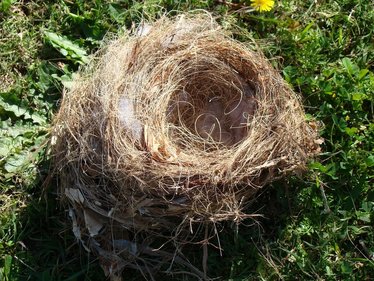 Does a bird create itself? There are two common answers to that question: Someone might say God created the bird. Another might say the evolutionary process created the bird. Either way, it is clear that the bird did not create itself. Therefore, however the bird was created, the bird was an effect of a cause. To be clear, my greater point has nothing to do with religion or science. It has only to do with bringing your attention to the obvious fact that a bird is not its own origin. It's origin preceded it. But, does a bird create its nest? Let's say you saw the bird creating the nest. So, yes, the bird created the nest. However, if the bird was the result of a creative cause, then by extention, what the bird creates must also be a continuing effect of that same creative cause. Therefore, in this analogy, our bird cannot claim so called personal credit for creating the nest. (Maybe a little, but only from the most narrow self-centric point of view). And now we come to the central point. Are nests all that different than works of art? No. Is it true that artists are also creative in a similar manner as nest-building birds are? Yes. Just as our analogous bird, the artist cannot claim personal credit for what he or she creates. (Maybe a little, but only from the most narrow me-centric point of view). Because the artist, like the bird, is merely an outer manifestation of an inner creative force. And so, from the 30,000 ft level as they say, there is no isolated, or special artist creating anything. There is only the universe expressing itself.. There is a third answer to the question of how the bird was created. And that is the creative intelligence of the universe created the bird and the nest. By saying “creative intelligence of the universe” I am not inferring a supreme being such as is promoted in the theory of intelligent design. Rather, I am pointing to the fact that the universe expresses itself intelligently. The benefit of describing creativity this way is that it employs evolution and natural selection as its process but also recognizes the presence of an intrinsic intelligence that pervades all life. Philosopher Alan Watts suggested that the individual human being is a particular focal point in which the universe expresses itself as the true Self.  "Harmony" "Harmony" A friend asked me to explain Post Personalism. I said it was making art that communicates attributes of oneness, kindness and compassion through art. As is typical when I explain Post Personalism this way, he wasn't quite sure what I was talking about. So I said, let's imagine that you have tremendous artistic talent and could make anything you wanted. With that, how would you communicate the idea of harmony in a work of art? He thought for a moment then said he would use a tuning fork. Then I asked, how would you take the idea of the tuning fork and translate it into a concept of personal, social, political and racial harmony. He said he would "use multiple tuning forks, like a bouquet. And each tuning fork would produce a different note but all tuning forks would be together in the bouquet". And I said, You got it!—That's Post Personal art. Inspired by my friend's idea, I made this quick digital sketch of a bouquet of tuning forks.
https://youtu.be/cLF6tWblmGc
 Agnus Martin Agnus Martin
In this video artist Agnus Martin sees Love filling the world. She also sees the ‘innocence of a tree’ and then somehow corresponds that to the image of a grid. Then she is seen turning and painting a single stripe down the center of a canvas. Her words and actions are an extraordinary juxtaposition.
Martin is so rooted in love and innocence that there is no separation between that reality and the painting of grids and stripes. You have to be a very awakened person to know love and innocence in the act of painting a stripe. You also have to have a very highly developed sense of perception. Most people looking at a stripe, or painting of one, and wouldn’t see or experience anything special. And yet, to Martin, that act of painting a stripe is a doorway into love and innocence. It transforms the austere stripe into a rarified form of beauty that only other lovers of innocent stripes can appreciate.  The greatest threat to humanity is not religious extremism, climate warming or nuclear war. It is the the inability of individual humans to see see themselves as unwitting slaves of collective unconsciousness. To state it theatrically, today the earth is populated almost entirely by zombies. The vast majority of humans today are like pale corpses staggering through almost-life, pushed around by TV, advertising, devices and the war on our attention. . . . Then suddenly the zombies (speaking through an interpreter) say to me: "Hey fancy mouth, you are human too so we are going to eat you!" And they begin lurching toward me. "Ok, that's fine." I say, "But before you eat me I should warn you that I am not merely human, I am post human! I may have a human appearance but I am human being. And if zombies eat being they will surely die!—I mean, in a good way this time. So I warn you, eat my flesh only if you can withstand the bitter taste of that truth!” The zombies halt their lurching and look at each other confused. The moral of the story is, when we are more being than human, we are no longer controlled by collective unconsciousness. So don't be a zombie artist. Make art consciously. 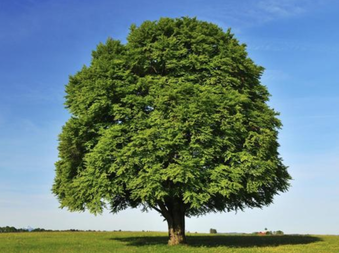 What is a tree if you do not call it a tree? What is a tree if you do not label it any kind of tree like a fir, or spruce. Or plant, or organism? What is it? And you cannot call it an assemblage of leaves, branches, trunk and roots. What is it? Imagine seeing a tree there before you. It clearly exists but what is it if there is no definition applied to it? Trees have been around longer than human language, so they have been something before humans called them anything. But what is a tree? Without any label it is mysterious. It is an undefinable expression of life. Because we name things, we think we know what they are, but naming them reduces them to a superficial concept. . . Like the words art and artist.  Willem de Kooning (1904-1997) Willem de Kooning (1904-1997) "The artist is a master of observation. He observes the world with penetrating depth. But there is one thing that is more difficult to observe than all others. And yet, when that one thing is observed with the same penetrating concentration, the consciousness of the artist becomes transformed. And that is to observe oneself inwardly.” -ph “On one level, observing your ego is to know yourself. At a deeper level, knowing yourself is being yourself”. - Eckhart Tolle  Someone asked: You say the creative process is always egoless. Please explain. Me: Remember, the creative process relates to how things are made. Let us not confuse how things are made with why they are made. Things can be made for egoic reasons but things cannot be made by the ego, at least not very well. In the creative process you cannot simultaneously create and hate, or disregard, what you create. If you try, you will find that it is terribly uncomfortable. You cannot build a house and simultaneously tear it down. If you do manage to get the house done, post a picture of it because it will surely go viral. Or to put it this way: the ego becomes very uncomfortable, even fearful when faced with the prospect of letting go to the natural creative flow of life. Or, let's put it yet another way: when a so-called bad guy throws a pot on the potter’s wheel it is the same creative process that a so-called good guy must use to throw a pot. However, regardless of their good or bad intended use of their pots, if either of them fight the clay and potters wheel, and resists the process of making it, then it will be the other guy who gets his pot made for however he intends to use it. The ego is never kind. Be kind to the creative process otherwise you will make it unkind to you.  “The object isn’t to make art, it’s to be in that wonderful state which makes art inevitable.” —Robert Henri (1865-1929) Artist and author of The Art Spirit. I think Robert Henri is saying the same thing as Morris Graves when he said "My first interest is in being, along the way I am an artist." They are both pointing to a dimension that is deeper within the artist. Idea for a cartoon: There are two paintings hanging in a museum and they are conversing while watching viewers pass by. One painting says to the other "Sure, you can call them human if you want, but what do they really mean?"
The Post Personal Project is about changing consciousness. Not merely changing the furniture of the mind. -ph
 Imagine for a moment that your head is a movie projector. Now imagine that the world you see before you is a projection of your mind. You see your world flowing outward from you and filling the space beyond as far as the lens of your eye can see. And whichever direction you turn, your mind continues filling that void out there with a brightly colored moving image of your world. Most people believe their world is real, but some philosophers believe the world is a dream created by the “dream machine” of the mind. Sometimes it’s a happy dream and sometimes tragic. But when we finally realize it’s only a dream, then however it is, is ok. It's just a dream. Then we avoid becoming a character in a movie of our own imagination. 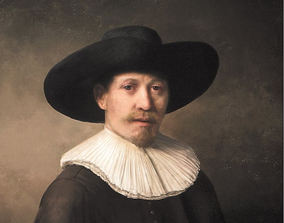 Painting by Rembrandt Painting by Rembrandt I read an article about the computer that painted a perfect copy of a Rembrandt painting. I'm a big fan of the artist vs robot topic. I believe that very soon AI will not only be able to copy any artistic styles perfectly, it will also create its own styles that are heretofore unimaginable to humans, leaving human originality behind. However, robots will always have one major limitation compared to the human artist: Robots will never be able to create something beautiful as the result of deep inner suffering. |
AuthorPatrick Howe, Artist, Author, Educator, Electronic Music Composer Blog Categories
|





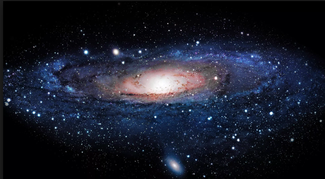


 RSS Feed
RSS Feed
